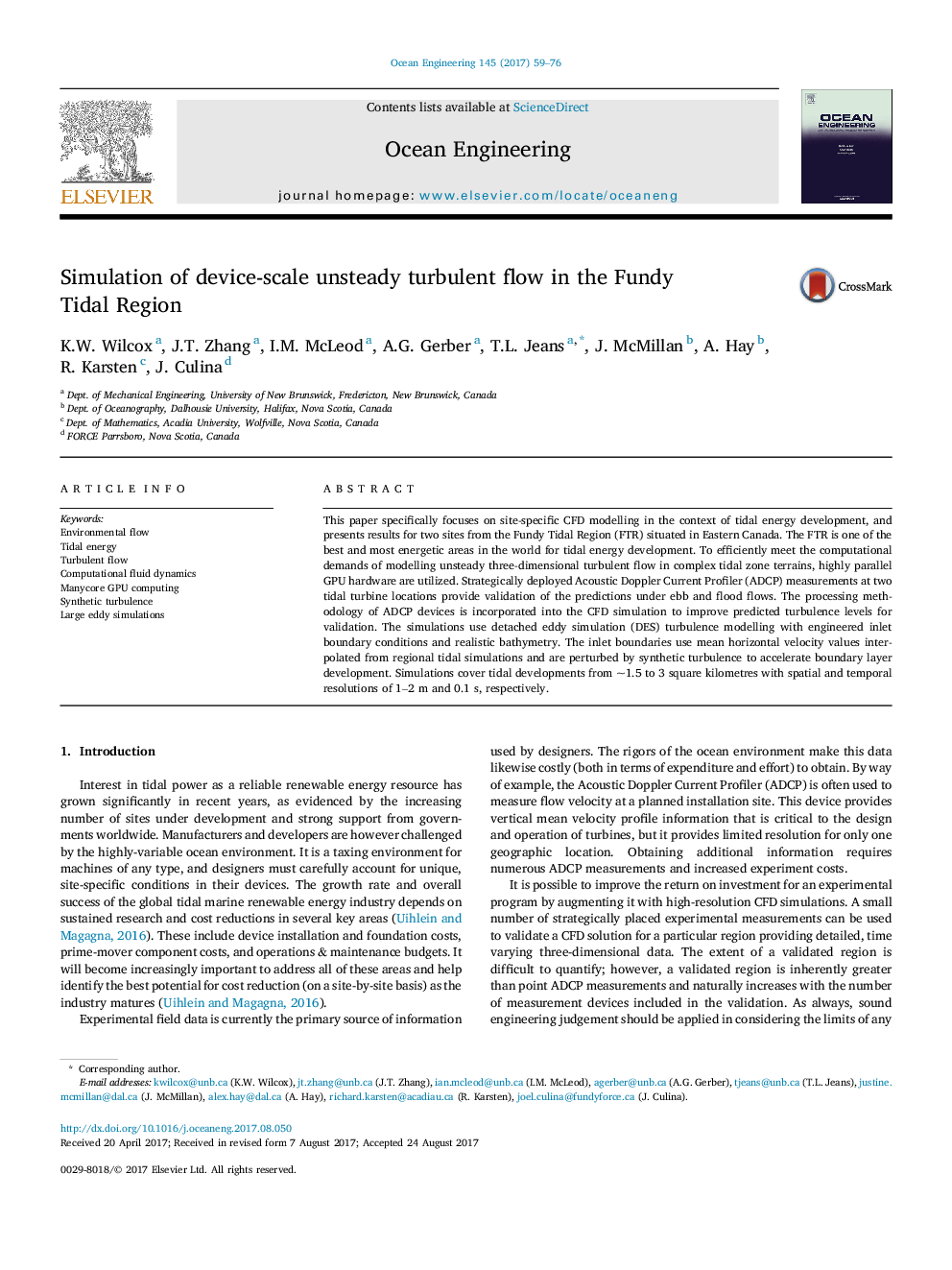| Article ID | Journal | Published Year | Pages | File Type |
|---|---|---|---|---|
| 5474092 | Ocean Engineering | 2017 | 18 Pages |
Abstract
This paper specifically focuses on site-specific CFD modelling in the context of tidal energy development, and presents results for two sites from the Fundy Tidal Region (FTR) situated in Eastern Canada. The FTR is one of the best and most energetic areas in the world for tidal energy development. To efficiently meet the computational demands of modelling unsteady three-dimensional turbulent flow in complex tidal zone terrains, highly parallel GPU hardware are utilized. Strategically deployed Acoustic Doppler Current Profiler (ADCP) measurements at two tidal turbine locations provide validation of the predictions under ebb and flood flows. The processing methodology of ADCP devices is incorporated into the CFD simulation to improve predicted turbulence levels for validation. The simulations use detached eddy simulation (DES) turbulence modelling with engineered inlet boundary conditions and realistic bathymetry. The inlet boundaries use mean horizontal velocity values interpolated from regional tidal simulations and are perturbed by synthetic turbulence to accelerate boundary layer development. Simulations cover tidal developments from â¼1.5 to 3 square kilometres with spatial and temporal resolutions of 1-2Â m and 0.1Â s, respectively.
Keywords
Related Topics
Physical Sciences and Engineering
Engineering
Ocean Engineering
Authors
K.W. Wilcox, J.T. Zhang, I.M. McLeod, A.G. Gerber, T.L. Jeans, J. McMillan, A. Hay, R. Karsten, J. Culina,
